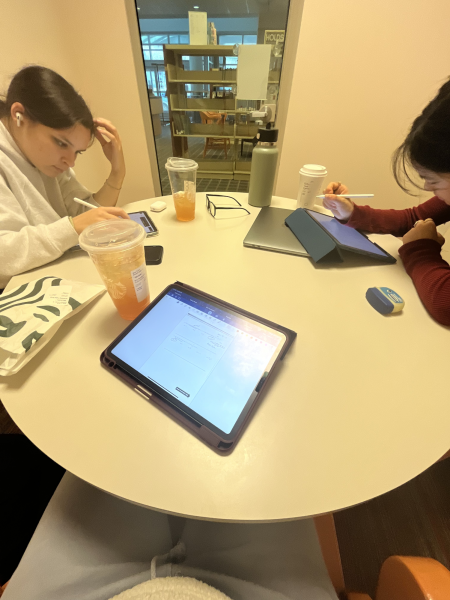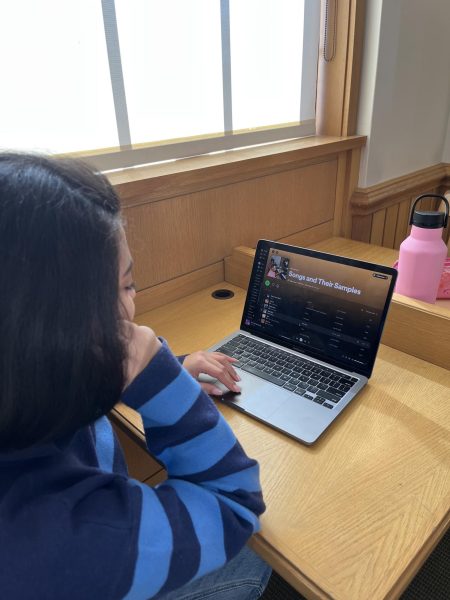Student-based scheduling limits course offerings
To the Dial Editorial Board,
I read with great interest and enthusiasm two articles, entitled “Diversity vs. Decolonization” and “Students seek additional English department course offerings”, and would like to provide a few further comments to the student body so that, should they wish to pursue this important matter, they can do so with greater context and understanding of what change would mean for their academic experience. Out of every school I’ve attended or worked at, Hackley offers the fewest number of course options for its student body. Coming from that perspective, and sharing the view expressed by Sophie Thomas in her article that our recent strategic plan contains an imperative to offer a wider array of courses, I want to offer some thoughts about the benefits and drawbacks that could accompany a broader set of course offerings at Hackley.
The first thing to understand is that the reason Hackley’s course selection is more limited than its peers (check out any rival independent school’s course catalogue online and you will see this to be true) is because of the school’s commitment to two things: a schedule that only accommodates year-long courses, and, relatedly, to what the school has termed in the past “student-centered scheduling.” The reason a schedule with only year-long options limits course offerings is straightforward: if a student can only sign up for one class per time slot per year, their options are automatically capped at, under our current schedule, 7 courses (and this would be with very few free periods). Consider, however, if the History and English departments offered trimester-long electives. If these kinds of electives were open, then a student may be able to take classes on six different topics with just one slot devoted to English and another to history (3 English trimester-electives and 3 history trimester-electives).
So, since we are already on a trimester schedule, what’s to stop us from making this change? The answer lies in the second commitment: student-centered scheduling. The principle of student-centered scheduling is that every student gets to take exactly the courses they are interested in taking. What this means in practice is that the school cannot offer both trimester and year-long courses while maintaining a commitment to guaranteeing your entrance into exactly the classes you want to take. An example will help illustrate this:
First, think about each of your classes as following one of seven slots or, what teachers class “patterns”. Your class that meets 1st period on day 1 will meet 2nd period on day 2, etc., and we call this “Pattern A”. For a visual explanation of this the attached photo. Once you’ve wrapped your head around patterns, consider the following problem. Let’s say you have signed up for a trimester-long history class that meets during pattern A, and you are put in a section of Algebra II that meets during pattern D. Let’s further assume that the history elective you want to take second trimester meets during pattern D. Under this situation, you would be left with three options: (1) you could not take any history elective in the second trimester (which may not be an option at all based on graduation requirements), (2) you could take a different history elective that meets during pattern A, but may not be your first choice of class, or (3) you could switch which section of Algebra II you are in from a pattern D section to a pattern A section, thus freeing your pattern D up for your preferred history elective.
If that was all over your head, the shorter answer is this: providing more electives interferes with the school’s ability to guarantee that you will get into exactly the electives you want, which can mean you either are placed in classes which are your 2nd, 3rd, or lower choices (a la the outcomes we see in EX-Day selection), or that you would have to switch sections in your year-long classes, potentially having to learn the approach of a new teacher halfway through a school year.
What this example should demonstrate is that student-centered scheduling serves to promote one student-interest in particular, the desire to get exactly the classes the student wants to take. Should the student body choose to prioritize other interests, such as a wider variety of course options or a set of courses that more fully reflect the diversity of the student body, then other scheduling options exist, just with their own drawbacks.
In my experience, a schedule that prioritizes course options over guaranteed course-placement is preferable not just for the reasons both Dial articles articulate, but also because I found my own teachers responded positively to being able to offer classes that discussed the particular content that fascinated them. This, in turn, meant that their elective classes were exciting, engaging, and, even if they were not my first or second choice, gave valuable knowledge of, and insight into aspects of the human experience (either historical or literary) I would never have encountered in broader year-long courses. This is not to say my teachers or my colleagues at Hackley do not do their best teaching because we offer more year-long courses than specific trimester electives; the professional and moral standards to which we hold ourselves as your teachers do not change based on the content we bring into the classroom. What I hope, however, is that the student body continues to discuss this issue thoughtfully and with a complete understanding of what would be gained and lost in a transition to a system that offered more course offerings.










